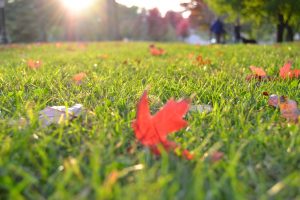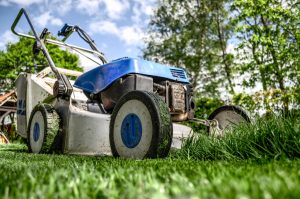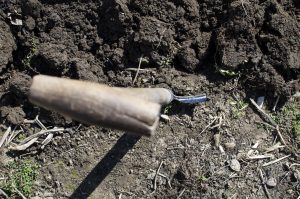Do you have a to-do list of DIY projects in your garden before winter? Or, perhaps you’re not quite sure where to start. This Tuesday’s Guest Post is from Oliver Jones, an experienced garden and lawn care specialist. He is sharing his expert advice on how to winterize your lawn and yard. These are all budget-friendly ideas. I hope you enjoy this read as much as I did!
RELATED POST: How to Make a Garden Gorgeous Year Round
Just as we prepare our houses and wardrobes for the long months of winter, our gardens require preparations that will not leave them crying out for help once the season is over. There are many DIY projects to complete in your garden before winter that won’t require spending any money on new tools or products, and they are not time-consuming either.
Clear diseased, dying, and dead weeds and plants
Leaving dead, dying or diseased weeds and plants in your garden creates a good habitat for pests, snails, and slugs to breed. Thus, you will have a hard time getting rid of them next spring, and they might munch on your seedlings within no time. To avoid this, pick and discard such plants and weeds in the trash. Also, expose underground pests to the winter predators and weather by tilling or turning over the soil with a garden fork.
Note: Working the soil when it is wet does more damage than good. Instead, plant cover crops, as they help in capturing nutrients, reducing soil erosion as well as controlling weeds during the winter. In addition, they enrich the soil for spring.

Burn the yard waste to produce ash
Ash is a valuable product for your garden. With ash, you can easily get rid of weeds, and diseased or woody material. Thus, you should burn garden waste, if it cannot be composted, before winter. Wood ash contains potassium/potash, and it is an essential nutrient for crops. Note: check your local ordinances to inquire whether burning is permitted, first.
Note: Ash is alkaline and you should thus only use it in small amounts in your soil. You can also add it to your compost if it contains acidic materials such as citrus peel. In addition, ash makes a great substitute for lime when growing brassicas as it also reduces the risk of clubroot (a fungus that causes disease and rot in the roots).
Winterize the compost bin
With the cold temperatures in winter, the composting process is likely to slow down, but you can keep it going by covering the bin with a tarp. Also, you can keep the composite pile moist by occasionally soaking it with water. And, to keep it insulated, add straw or leaves on the sides and top.
Prepare the garden ground
The best time to incorporate organic matter into your garden is before winter, once you have removed the weeds and all the other plants. If you go for compost, the winter weather, thawing action and freezing, helps break it down, kill overwintering pests while also breaking down heavy clay thus improving its structure and drainage. Once the winter season is gone, your ground will be ready for whatever you throw at it.
Prepare and protect over-wintering garden crops and perennials
Tying in or staking existing fruiting plants helps prevent them from being damaged by wind during the winter season. Also, move containers and pots to sheltered areas. For places where temperatures go below freezing, you should ensure to wrap the pots in bubble polythene and raise them off the ground to ensure they do not crack.
If you have plants that continue growing through the winter such as brassicas, some root
vegetables or oriental leaves, you should clear out debris and leaves and also check if netting is in good condition.
Mulch
For added winter protection for your plants, adding a layer of mulch around them, two to four inches deep, really helps. Garden leaves or grass clippings can be collected for mulching by using a rake, leaf vacuum, or a lightweight cordless leaf blower.
This article explains perfectly how to mulch from leaves.
Prepare the garden lawn for winter
Grass may grow slowly in autumn, the period before winter, but this is not an excuse to stop caring for the lawn. It is during this time that the grass absorbs more energy, nutrients, and moisture as it prepares for winter and a little care can mean a healthy spring lawn. So, allow more sunlight by lowering your mower’s blade to the lowest setting during the last two cuttings.

Also, aerate the soil to allow water, oxygen, and fertilizer to reach the grass roots. Rake the leaves or better, blow them easily using a backpack leaf blower, fertilize the lawn, fill in the bald spots, and it is also the best time for weed control in your lawn.

General maintenance
You know how hard it gets trying to repair sheds or outbuildings in winter? You’re better winterizing them before the snow arrives. To prevent draughts, fix any rotten or loose boards. Replace bad door hinges and so on.
And, to ensure that when spring comes you will hit the ground running, sharpen and oil your gardening tools’ blades as they tend to become dull after a season of use. You don’t have to invest in the more expensive oils for this. With vegetable oil, you will get the job done just fine.
It is during this time that you also wash your pots, seed trays, labels, and any other gardening equipment as this prevents the spread of molds before storing them for the next season of use.

Handling some of these tasks beforehand makes transitioning from winter to spring easy.


